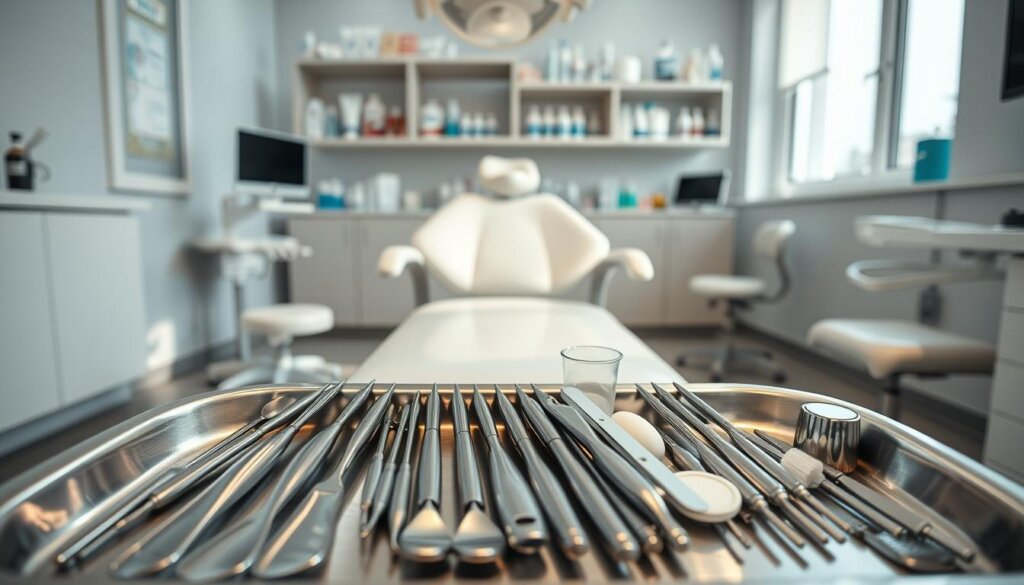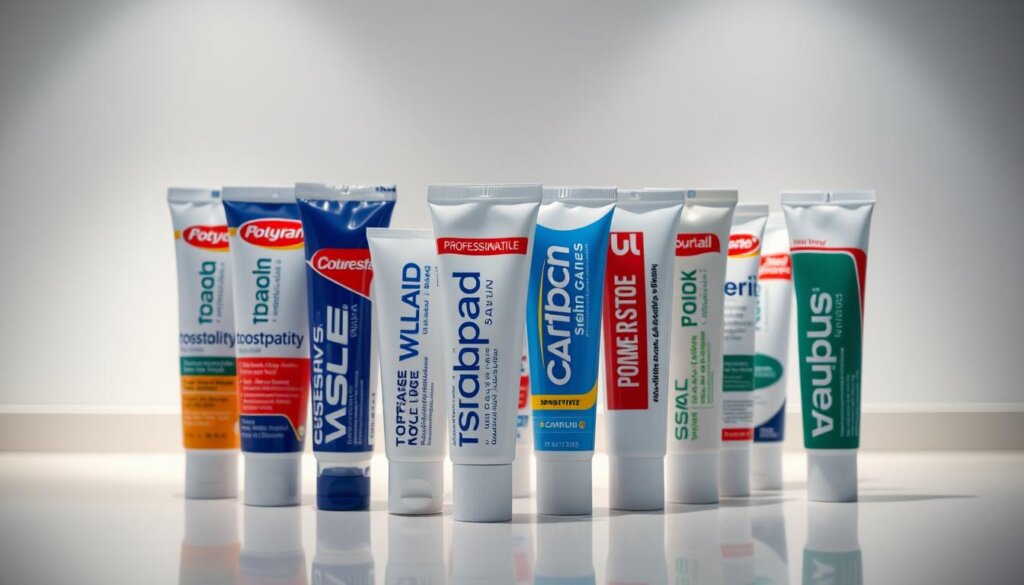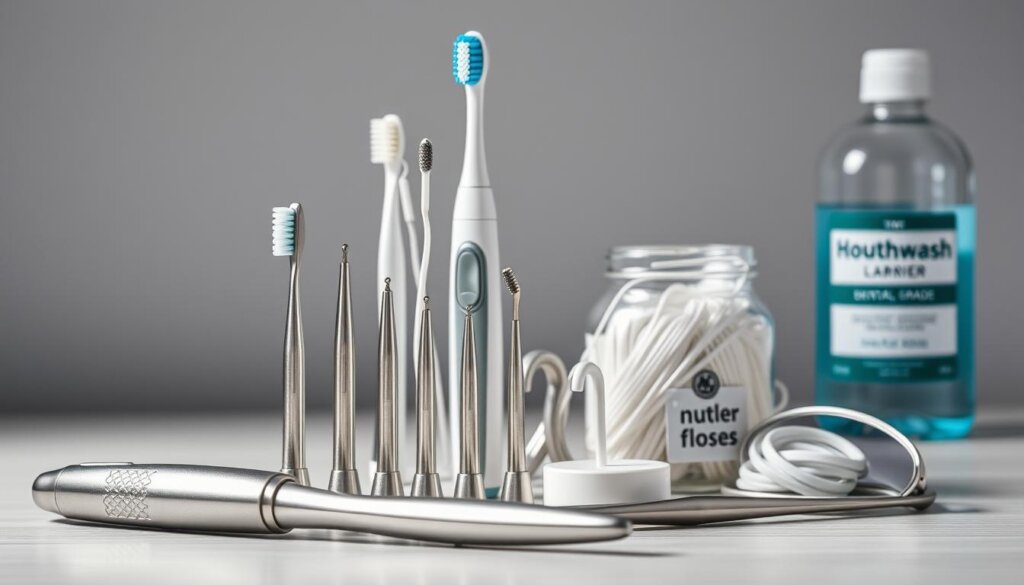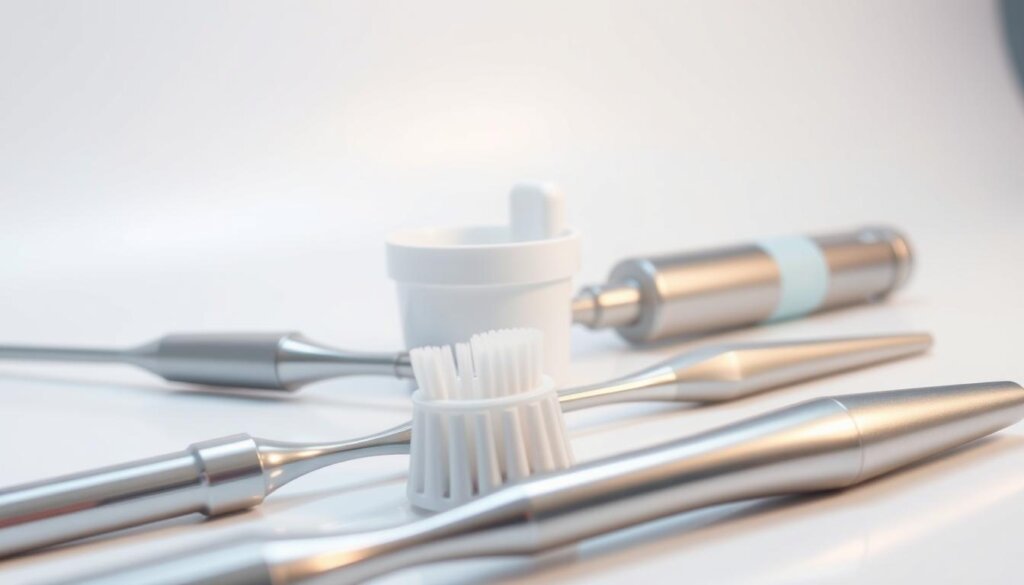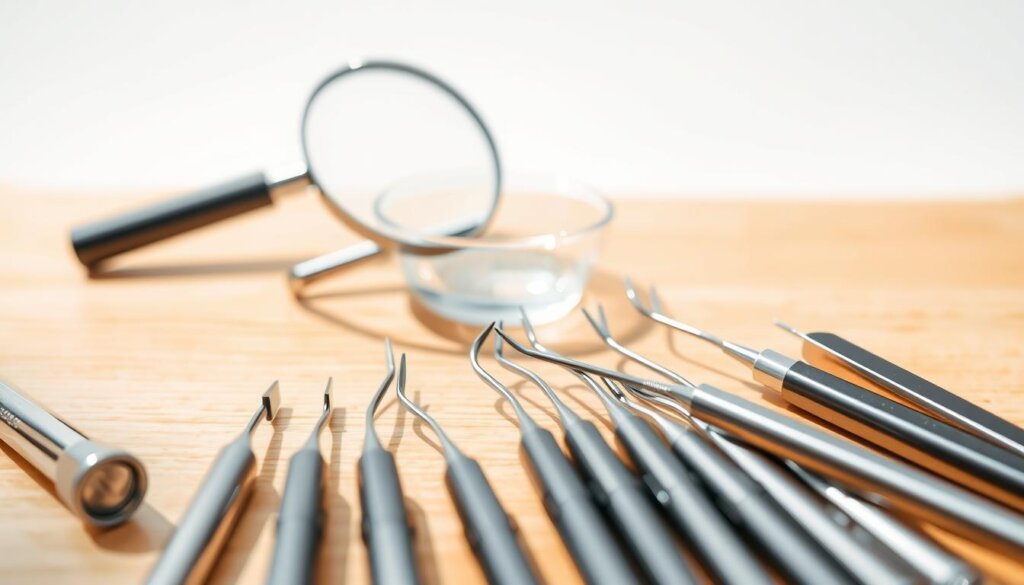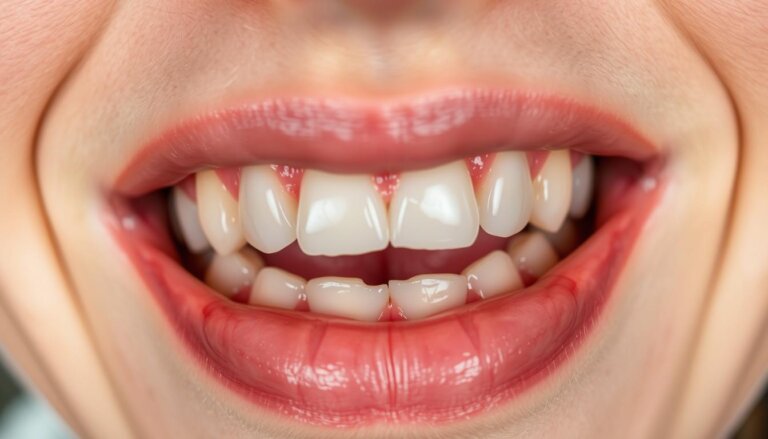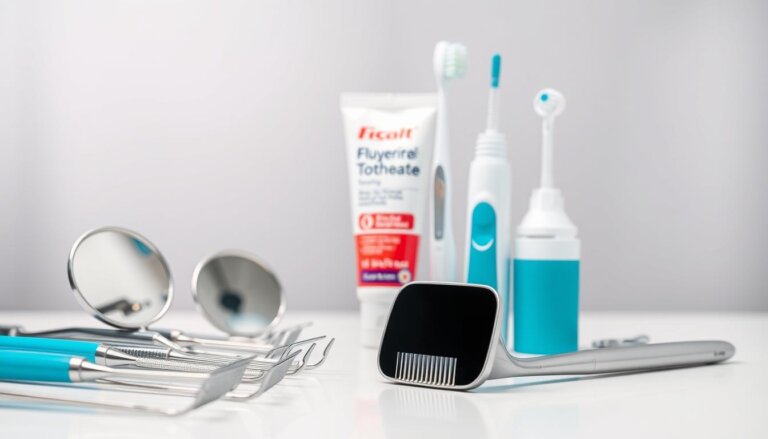What Kind of Toothpaste or Tools Do Dental Hygienists Use for Cleaning?
Ever wonder if the secret to a bright smile lies not in your toothbrush, but in the tools and techniques a dentist uses? You’re not alone.
Many people ask, “What kind of toothpaste or tools do dental hygienists use?” The answer involves a mix of science, safety, and proven results. In offices from New York to San Antonio, like Blanco Crossing Dental, hygienists use special tools that are chosen for their effectiveness and their ability to protect your gums.
When you go for a cleaning, they use mirrors to get a good look at all parts of your mouth. Then, they get rid of plaque and tartar with hand scalers, curettes, and ultrasonic scalers that cool and clean your teeth. Saliva ejectors keep your mouth dry during the process, and digital radiography helps find any problems with less radiation.
After removing tartar, they polish your teeth to make them smooth and remove stains. They also floss and give tips on taking care of your teeth at home. They recommend not using sharp tools on your own. Instead, use electric toothbrushes and water flossers as they suggest.
For toothpaste, hygienists pick ones that the ADA approves of, based on your dental needs. This could include fluoride toothpaste for cavities, gentle ones for sensitive teeth, or special kinds for other issues. This choice is guided by ADA standards and advice from dental pro groups like BURST Oral Care’s network.
Dental cleaning tools are special. They’re chosen with care for diagnosis, comfort, and long-lasting health. This is why a professional’s choice makes a big difference even when you’re at home.
In discussing professional dental cleaning tools, we’ll show how each tool, from mirrors to ultrasonics to prophy paste, leads to better dental health. We’ll explain why these specific choices are important for keeping your mouth healthy and giving you confidence in your smile.
Key Takeaways
- Professional cleanings use specific tooth cleaning instruments—from mirrors to ultrasonic scalers—chosen for precision and safety.
- Hygienists match toothpaste and prophy paste to risk: fluoride, low‑abrasive, or specialty formulations as indicated.
- Saliva ejectors, digital radiography, and air‑driven handpieces are core dental hygienist equipment for efficient care.
- Do not self‑scale at home; rely on scheduled care and evidence‑based dental hygiene tools.
- Electric brushes and water flossers support home care but do not replace professional dental cleaning tools.
- ADA‑aligned recall intervals—at least once annually, often twice yearly—help prevent caries and periodontal disease.
The Role of Dental Hygienists in Oral Care
Dental hygienists lead patients in prevention in dentistry. They get each visit ready with a detailed check. They use tools to see teeth and gums well before the dentist checks. Their job combines science with teaching patients. They use special tools made for accurate and safe work.
What Services Do They Provide?
They do important cleanings above and below the gum with special tools. Then they polish and floss teeth. They use special tools to get rid of plaque and tartar safely.
Hygienists also help with getting X-rays. They use precise tools to record issues to help diagnose and make referrals in time.
- They pick tools based on your teeth’s needs.
- They choose cleaning pastes that are best for your enamel.
- They teach how to brush right and use tools at home.
Importance of Preventive Care
Regular visits can stop disease before you know it’s there. The ADA suggests check-ups often to avoid serious gum disease. Pro tools used in offices take away tartar that your tools at home can’t, cutting down on germs.
Hygienists make plans that work for you to keep teeth healthy. They mix high-tech brushes and tools with their own to keep your mouth healthy for the long run.
Types of Toothpaste Used by Dental Hygienists
Dental hygienists in the United States pick toothpaste based on a patient’s needs and goals. They use special prophy pastes in the clinic for polishing teeth. At home, they help patients choose the best products for their oral care. They link the science of products with everyday routines and effective dental tool use.
Fluoride Toothpaste vs. Non-Fluoride
Hygienists mostly recommend fluoride toothpaste. It helps make enamel stronger and lowers the chance of cavities. Brands like Colgate, Crest, and Sensodyne are often suggested for good results.
Some people prefer non-fluoride toothpaste for personal reasons. But hygienists warn that these don’t strengthen enamel like fluoride does. They stress the need for careful brushing and using floss or interdental brushes with these pastes.
- Clinic use: Prophy pastes (3M Clinpro, Dentsply ProphyJet powders) guide stain removal with controlled abrasivity.
- Home care: Fluoride pastes align with preventive protocols and work best with electric brushes and floss or interdental brushes.
Natural and Herbal Toothpastes
Many patients want toothpaste with fewer synthetic ingredients. They look to brands like Tom’s of Maine, Hello, and Himalaya. Hygienists compare these to standard products to ensure they meet goals like fighting plaque and preventing cavities.
Ingredients from plants like tea tree oil, aloe, or neem might help with freshness and some plaque control. Yet, the dental team always checks if these are as effective as fluoride for preventing cavities. They make sure good brushing and flossing are the main focus.
Specialty Toothpastes for Specific Conditions
The choice of toothpaste depends on the patient’s specific dental issues. Those at high risk of cavities might get high-fluoride toothpastes like Colgate PreviDent. Toothpastes for sensitivity, like Sensodyne, are used for those with sensitive teeth.
For those with gum recession or tooth erosion, mild toothpastes are best. Toothpastes that whiten are chosen for stains, along with professional polishing for better results.
- High fluoride: Targets frequent demineralization.
- Desensitizing: Nerve-calming agents reduce zingers.
- Low-abrasive: Preserves enamel and cementum.
- Whitening support: Aesthetic maintenance between cleanings.
Hygienists focus on the right technique like gentle brushing and daily flossing. This approach, along with the correct toothpaste, helps maintain healthy teeth and gums.
Essential Tools for Dental Cleaning
In the field of dental health, the right tools are crucial. Hygienists use a special set of tools to clean teeth properly. This helps remove harmful buildups without harming the teeth or gums. These tools work with equipment that helps the hygienist see better, control water flow, and keep things clean.
Scalers and Curettes
Hand scalers and curettes are very important for dental cleaning. They have sharp ends that get into tight spaces and under the gums. They carefully remove hard deposits from the teeth and roots.
Different scalers and curettes are used for different parts of the teeth. They are made to put less pressure on the gums, which helps make the cleaning better and more comfortable.
Ultrasonic Scalers
Ultrasonic scalers are like mini power washers for teeth. They use vibrations to break up plaque and calculus. A water spray keeps things cool and clean. Patients find this method more comfortable.
These devices come with various tips for different cleaning needs. They make cleaning quicker and easier. This helps save effort and makes hand cleaning more effective.
Polishing Tools and Pastes
After scaling, teeth are polished with special tools. These tools use a gentle paste to smooth and clean the teeth. This step helps remove stains and supports gum health.
Other tools like mirrors, saliva ejectors, and floss help in the cleaning process. Digital x-rays also provide important information. All these tools work together for a complete cleaning and check-up.
The Importance of Fluoride Toothpaste
Fluoride toothpaste is key for home dental care because it fights the damage from plaque acids. In talks about oral hygiene and dental cleaning tools, hygienists show how daily routines can cut down on dental visits. They suggest fluoride toothpaste for protecting enamel, along with regular brushing and flossing.
How Fluoride Strengthens Enamel
Acid from plaque removes minerals from enamel, making it weaker. Fluoride rebuilds enamel by creating fluorapatite, which is strong against acids. This is most effective when using an electric toothbrush that has a two-minute timer.
If plaque becomes tartar, only a dentist can remove it. Good habits at home can prevent tartar and make dental visits smoother. People also feel less tooth sensitivity when fluoride protects their enamel.
Recommendations for Patient Use
Dental professionals recommend brushing twice a day with fluoride toothpaste. They also suggest flossing daily. For those at high risk, they might suggest special toothpaste like Colgate PreviDent or 3M Clinpro 5000. Others might do fine with products like Crest Pro-Health or Colgate Total.
- Brush for two minutes, morning and night, and spit without rinsing to let fluoride work longer.
- Use interdental brushes or floss to disrupt plaque where bristles miss.
- Schedule cleanings every six months; higher‑risk patients may need three‑ to four‑month intervals.
Hygienists typically don’t recommend non-fluoride toothpaste as it doesn’t protect enamel as well. Using fluoride toothpaste as part of a smart oral hygiene routine is what dental hygienists suggest. This matches home care with what’s done in dental offices, leading to better oral health.
Understanding Dental Prophylaxis
Dental prophylaxis is a professional cleaning planned to stop plaque and calculus. These can hurt gums or bone if not controlled. It uses careful checking, controlled cleaning, and teaches patients. The goal is to reduce germs more than what home care can.
Definition and Purpose
This cleaning takes off soft biofilm and hard stuff, shines teeth, and checks for cleanliness between them. Hygienists look closely at gums to find plaque, calculus, and bleeding spots. They also talk about how to care for teeth at home and use tools correctly based on the person’s needs.
Tools and Techniques Used
Checking starts with special mirrors and tools, then maybe x-rays to look at bone health over time. A tool keeps the mouth dry and comfy during cleaning and polishing.
- Scaling: Special tools and machines remove hard deposits carefully. They use water to help clean.
- Polishing: A tool with a spinning cup and special paste makes teeth smooth and removes stains.
- Interproximal finishing: Floss and other tools check and clean between teeth, helping choose products for home care.
Clinicians pick tools that are safe for gums and teeth during cleaning. They choose based on where the buildup is, how deep pockets are, and if the area is sensitive. This ensures a gentle and thorough cleaning.
Our team teaches why only professionals should remove tartar. They show the right way to brush, floss, and pick dental care tools. This helps your daily care work well with your visits to us.
Materials for Scaling and Root Planing
To effectively clean off biofilm, you need precision and a soft touch. Dental pros use special tools that follow proven methods. With the right skills, these tools can remove what regular brushing can’t, making gums healthy again.
Hand Instruments Overview
Hand scalers and curettes have sharp ends that break up tartar and plaque. Their unique shapes let dentists clean hard-to-reach spots and just under the gums.
- Scalers: They have sharp tips that are great for getting rid of tartar above the gum on teeth.
- Curettes: Their rounded ends and curved sides are perfect for cleaning under the gums.
- Steel and coating choices: Made of sturdy stainless steel and coatings that stay sharp longer.
These tools help dentists feel for any leftover tartar or rough spots on the tooth. They make sure the teeth are totally clean after treatment.
The Use of Ultrasonic Tools
Ultrasonic scalers break up hard tartar with high vibration and keep cool with water. They’re adjusted for different cleaning needs to be both effective and comfortable.
- Starting with units that reach tricky areas to remove big chunks of tartar.
- The water flow helps break up plaque and clears away the mess for a better look.
- Then, using smaller tools for a detailed clean, ensuring nothing is missed.
Patient should know these pro tools are not like the ones at home; trying to scale your own teeth can hurt your gums and teeth. When used by experts, these tools make sure your teeth are deeply cleaned without harming them.
The Benefits of Professional Dental Cleanings
Clinical cleanings do more than make teeth bright. They protect gums and save tooth enamel. Dental hygienists use special tools and follow proven methods. People often ask about the toothpaste or tools used by dental hygienists. The answer? It’s more than just brush and paste. It’s a system designed for the best results.
Modern visits blend prevention and early detection. Dentists use tools like mirrors, explorers, and digital X-rays to spot problems early. They find tartar, harmful plaque, and beginning signs of cavities. Special pastes make teeth smooth, and special tools clean places you can’t get to at home.
Comparison to Home Care
Electric toothbrushes and flossers help keep plaque away. But hard tartar sticks to teeth and can only be removed by a dentist’s tools. Tools like ultrasonic scalers and hand curettes are needed.
After tartar is removed, polishing makes the tooth surface smooth. This helps keep plaque from coming back quickly. When people ask about the tools hygienists use, it’s important to know they use special pastes and tools. These work together to clean areas that are hard to reach with just brushing.
- Home care: daily plaque control, stain reduction, breath support.
- Professional care: calculus removal, stain polishing, periodontal risk assessment.
- Clinical diagnostics: visual exam plus digital imaging for precise mapping.
Frequency Recommendations
Most adults should get professional cleanings twice a year. At the least, everyone should visit once a year. If you have gum disease risks, braces, or trouble cleaning your teeth, you might need to go three to four times a year.
Seeing your dentist regularly means shorter visits. Using good brushes and cleaning between your teeth helps a lot. Then, professional cleanings can do their full job. And your at-home care keeps your teeth healthy until your next visit.
| Aspect | Home Care | Professional Cleaning | Why It Matters |
|---|---|---|---|
| Biofilm Control | Electric brush, floss, water flosser | Ultrasonic scaler, hand scalers, polishing | Daily disruption vs. definitive removal of mature deposits |
| Stain Management | Whitening toothpaste; mild abrasives | Prophy paste and rubber cup polishing | Deeper extrinsic stains lifted efficiently |
| Detection | Self-checking for bleeding or sensitivity | Mirror exam, periodontal charting, digital X-rays | Early disease signs identified and documented |
| Tools Question | What kind of toothpaste or tools do dental hygienists use for cleaning? | Professional dental cleaning tools and calibrated dental cleaning equipment | Right instrumentation aligns with risk and anatomy |
Cleaning Tools in Pediatric Dentistry
Kids’ dental visits need the same expert approach as adults, but tailored for little ones. Tools and products must match their small mouths and short patience. All while protecting their young teeth. Our goal? To be gentle but effective, using the right equipment for comfort and safety.
Adaptations for Children
We start with small mirrors for clear viewing and gentle saliva ejectors. There are special scalers and low-power cleaners for young teeth. They cut down on scary noises and keep things comfy. A soft cup and gentle paste make teeth shine, without harming them.
- Smaller tools get to hard-to-reach spots in kids’ mouths.
- Electric toothbrush lessons include timers for two-minute brushing success.
- Water flossers help kids with braces keep their braces clean.
We blend learning with practice when teaching kids about dental care. Hygienists explain why tartar needs a pro’s touch. Regular visits, brushing, and proper flossing are all part of the lesson. This way, kids see the tools not just as gadgets but as part of their health routine.
Specialized Toothpaste Options
Choosing toothpaste is key, especially ones with fluoride for cavity-prone years. We pick flavors kids like to encourage brushing. Some come with the right fluoride level for daily use, others for special conditions. This is to ensure kids get the protection they need without swallowing too much paste.
- For tender teeth, gentle formulas are key.
- Special ingredients can help heal early tooth damage.
- For kids who don’t like strong flavors, there are softer options.
Brands like Colgate and Crest have special lines for kids to help them brush correctly. With the right tools and habits at home, these products protect young teeth. And, the equipment used in the dental office makes every visit as comfortable as possible for happy, healthy smiles.
Innovations in Dental Hygiene Tools
Clinics and home-care routines benefit from smarter designs and eco-friendly materials. These advances have improved dental hygiene tools. They make dental cleaning more efficient and raise daily oral care standards.
Advances in Technology
Digital radiography lets doctors see images instantly with less radiation. It lets them fine-tune images and easily get a second opinion. This helps spot problems early and keep track of them.
Brands like Dentsply Sirona and HuFriedyGroup make modern ultrasonic scalers. These tools remove tartar quickly and comfortably. They help make dental appointments shorter and less stressful.
Electric toothbrushes from Oral-B and Philips Sonicare are great for home use. They have timers and pressure sensors. These help people brush properly without hurting their teeth or gums.
Waterpik water flossers use water streams to clean between teeth and under the gumline. They are great for people with braces or dental work. They help keep mouths clean and healthy every day.
Eco-Friendly Tools and Products
Companies are making greener dental products with less waste. They use recyclable packaging and durable designs. Items like plant-based floss and refillable toothpaste are better for the planet.
BURST Oral Care focuses on safe, effective products. Supported by dental experts, they mix sustainability with top-notch quality. Their products are tested to be both green and effective for cleaning.
| Category | Representative Technologies | Clinical or Home Benefit | Sustainability Angle |
|---|---|---|---|
| Imaging | Digital radiography with instant enhancement | Lower dose, faster diagnosis, better case sharing | Less chemical waste than film processing |
| Scaling Systems | Ultrasonic units with irrigating spray | Efficient calculus removal and improved comfort | Durable tips and maintained devices extend lifecycle |
| Power Toothbrushes | Oscillating-rotating and sonic modes with sensors | Consistent technique and reduced abrasion risk | Replaceable heads and rechargeable batteries |
| Interdental Care | Water flossers and silicone picks | Effective plaque control around orthodontics and implants | Reusable designs reduce single-use plastics |
| Consumer Packaging | Recyclable cartons and refills | Convenient restocking and hygiene | Lower material footprint across oral hygiene products |
The Selection of Dental Polishing Paste
After a detailed cleaning with dental tools, hygienists pick the right polishing paste. They aim for a polished, smooth enamel that keeps plaque away and feels clean. The choice is based on stain type, enamel condition, any sensitivities, and existing dental work. They also pick tools that help achieve their cleaning goals.
Why does grit matter? Coarse grit quickly gets rid of tough stains, but fine grit is better for keeping enamel and its shine safe. Dental professionals find a middle ground, using polishing to support, not replace, cleaning. They consider things like patient comfort and the fluoride in the paste. The paste must also work well with the patient’s at-home dental care products.
Factors in Choosing the Right Paste
- Stain type: Different stains might need medium or coarse paste; thin biofilm is fine with fine grit.
- Enamel condition: If there’s a history of erosion, choose a gentle, fine-grit paste that can help rebuild the teeth.
- Types of dental work: There are special pastes for materials like composite or porcelain that won’t scratch them.
- Sensitivity: If you have sensitive teeth, look for pastes with specific ingredients that help reduce pain.
- Order of procedure: Always start with scaling using professional tools, then polish to make teeth feel cleaner.
- Research backing: Choose pastes that have been tested and show good results in dental studies.
Common Brands and Their Uses
Dental offices often have several kinds of pastes to meet different needs. The list below shows how some brands are typically used, including what to recommend for care at home.
| Brand | Key Feature | Typical Use | Grit Options | Notes on Restorations |
|---|---|---|---|---|
| 3M Clinpro Prophy Paste | Fluoride and optimized abrasive blend | General polishing after scaling | Fine, Medium, Coarse | Fine grit preferred around composites and porcelain |
| Dentsply Prophy Jet Paste (for air polishing units) | Formulated for air polishing with controlled particle size | Extrinsic stain on intact enamel | Fine to Medium (device-specific) | Avoid on exposed root surfaces and certain restorations |
| Kerr Cleanic | Variable abrasive technology that decreases as you polish | Start on moderate stain, finish to high luster | Adaptive (medium to fine) | Safe on most materials when finishing pass is light |
| Young Dental Prophy Paste | Wide flavor and grit range with fluoride options | Pediatric and adult care, tailored by stain level | Fine, Medium, Coarse | Select fine around composite and glass ionomer |
| Colgate PreviDent Prophy Paste | High-fluoride for enamel strengthening | Caries-prone patients needing added fluoride | Fine, Medium | Use fine grit to protect esthetic restorations |
| GC America MI Paste (used post-polish) | CPP-ACP for remineralization | Sensitivity and enamel support after polishing | N/A (topical cream) | Non-abrasive; apply after using tooth polishing tools |
In their work, dentists match specialized pastes with the right tools to polish carefully without harming the surface. This way, they keep enamel bright and safe until your next visit. It makes sure patients can follow up with good oral care at home.
Role of Mouth Rinses in Oral Hygiene
Mouth rinses help in both clinical settings and at home. Hygienists suggest mechanical cleaning first. They then recommend special rinses to enhance brushing and flossing. They tailor advice to fit each patient’s needs and habits.
Types of Mouth Rinses Used by Hygienists
Clinicians categorize rinses into cosmetic, fluoride, and antimicrobial types. Cosmetic rinses make your breath fresh but don’t do much for plaque. Fluoride rinses help restore minerals to your teeth with daily use.
Antimicrobial rinses target bacteria in hard-to-reach spots. Options include chlorhexidine, essential oils, or cetylpyridinium chloride. The choice depends on the patient’s needs and tolerance. Advice also covers the use of electric and interdental brushes.
- Preprocedural use: A quick rinse can reduce germs before certain dental treatments.
- Adjunctive home care: Brief use helps control swelling as dental habits get better.
- Sensitivity care: Fluoride rinses protect teeth for those who use hard cleaners.
Benefits of Antimicrobial Rinses
Antimicrobial rinses cut down on harmful bacteria and bleeding gums between dental visits. They help clean spots that brushes and floss can’t get to. Still, they should be used alongside other cleaning tools.
When followed correctly, these rinses add to your cleaning routine. They work well with tools like interdental brushes and water flossers. But remember, only a professional can remove tartar. Follow the instructions to avoid stains or taste issues. This keeps your dental care balanced.
Post-Cleaning Care Recommendations
Patients often wonder what toothpaste or tools dental hygienists use. Your visit to the clinic starts your care. But your routine at home keeps your teeth healthy. Using the right toothpaste and tools helps keep your enamel strong, fights plaque, and makes your next dental visit shorter.
Tips for Maintaining Oral Hygiene
- Brush twice a day for two minutes using a fluoride toothpaste. Try electric brushes like Oral-B or Philips Sonicare. They have timers and pressure sensors to help protect your gums.
- Floss once every day. Most hygienists suggest flossing before brushing. This helps fluoride reach more of your teeth.
- Consider a water flosser for braces, implants, or if you have sensitive teeth. Devices like Waterpik remove debris well and can make cleaning easier for those who find flossing hard.
- Visit your dentist every six months. Get exams and X-rays yearly to watch for any changes.
- Avoid using DIY scalers. Professional tools are needed to remove tartar without harming your teeth or gums.
Following these steps regularly is key. It answers the common question about what tools or toothpaste to use. It’s all about preventing problems, being precise, and safe.
Products Hygienists Recommend for Home Use
Hygienists tailor their suggestions to your needs and goals. Below are some recommended products for daily care.
| Category | Recommended Examples | Primary Benefit | When to Use |
|---|---|---|---|
| Fluoride Toothpaste | Crest Pro-Health; Colgate Total; Sensodyne Pronamel | Remineralizes enamel and strengthens acid resistance | Twice daily for caries prevention and enamel support |
| Low-Abrasive Polishing Toothpaste | Clinpro 5000 (Rx, sodium fluoride); Tom’s of Maine Fluoride | Fluoride delivery with gentle cleaning for exposed roots | High-risk caries patients or those with erosion |
| Electric Toothbrush | Oral-B iO; Philips Sonicare ProtectiveClean | Consistent plaque removal with timer and pressure control | Daily, especially for patients with dexterity limits |
| Interdental Cleaning | GUM Soft-Picks; TePe Interdental Brushes | Removes plaque between teeth where bristles miss | Once daily; ideal for wider spaces or bridges |
| Water Flosser | Waterpik Aquarius; Philips Sonicare Power Flosser | Disrupts biofilm interproximally and around implants | Adjunct for braces, implants, or bleeding control |
| Antimicrobial Rinse | Crest Pro-Health Clean Mint; Listerine UltraClean | Reduces bacterial load and freshens breath | As directed after brushing and flossing |
| Sensitivity Relief | Sensodyne Rapid Relief; Colgate Sensitive | Occludes dentinal tubules to reduce sensitivity | Daily for thermal or tactile sensitivity |
| Dry Mouth Support | Biotène Oral Rinse; ACT Dry Mouth Lozenges | Moisturizes tissues and buffers oral pH | As needed for xerostomia symptoms |
Our advice links care at the clinic with your routine at home. Knowing what tools and products to use helps you keep your teeth healthy. You’ll feel more confident about your oral care.
Training and Certification of Dental Hygienists
To become a licensed dental clinician, one needs proper education and plenty of clinical practice. Knowing how to use dental hygiene tools and following infection control rules are key for safe care everywhere.
Educational Requirements
Before you can take the National Board Dental Hygiene Examination and local clinical exams, most states want you to have an Associate’s degree from a CODA-approved college. This education makes students ready to use dental hygienist equipment safely and follow proven health guidelines.
Students learn about body structure, gum diseases, medicine, and X-ray techniques, alongside practical training. In labs, they practice removing plaque with manual and machine tools and then polishing teeth. They also learn how to sterilize equipment after treating each patient.
Besides that, training includes learning how to take digital X-rays that use less radiation. They also work on their ability to teach patients and encourage healthy habits that help with dental treatments.
Ongoing Training and Development
Once certified, dental hygienists must continue their education to keep up with new techniques and dental hygiene tools. They check out new features on electric toothbrushes and learn about home-care tools like water flossers based on recent studies.
Companies and dental groups offer training on how to use tools better, stay comfortable at work, and prevent infections. Joining groups like BURST Oral Care helps them get feedback that improves professional dental cleaning tools and makes care safer for everyone.
Hygienists also meet with other professionals to stay sharp, learn about new rules, and take courses that focus on their skills. This helps them use dental hygienist equipment accurately, efficiently, and according to the latest health standards.
How to Choose the Right Toothpaste for You
Start by looking at your dental check-up results and daily habits. Ask yourself: Which toothpaste do dental hygienists recommend? Their choices can help you select the best products for home use. It’s important to match your toothpaste with the right cleaning tools and routine for the best results.
Key Considerations for Consumers
Fluoride is key for preventing cavities. Aim for toothpaste that has 1,000–1,500 ppm of fluoride. If you’re at high risk for cavities, a dentist might suggest a paste with 5,000 ppm sodium fluoride.
If you brush strongly or have sensitive gums, check the toothpaste’s abrasiveness. Choose ones with moderate abrasiveness. For sensitive teeth, look for toothpaste with potassium nitrate or stannous fluoride.
The texture, taste, and foam of the toothpaste matter too. If you like it, you’ll use it more often. Consider toothpaste without dyes or SLS if you get mouth sores easily.
- Whitening aim: Opt for toothpastes with gentle silica for polishing. Steer clear of rough abrasives if your enamel is thin.
- Tartar control: Pick toothpastes with pyrophosphates or zinc salts to slow tartar build-up.
- Dry mouth: Look for toothpastes with xylitol and humectants to help keep your mouth moist.
Using the right tools can make a big difference too. Electric toothbrushes by brands like Oral-B or Philips Sonicare help control how long and hard you brush. Floss is a must for cleaning between teeth. A Waterpik can be great if you have braces or sensitive gums. Avoid trying to remove plaque yourself with DIY tools—leave that to the professionals.
Recommendations from Dental Experts
Dental experts usually recommend fluoride toothpaste to fight off tooth decay. For sensitivity, go for toothpaste with stannous fluoride or potassium nitrate. If you’re worried about stains, use a mild whitening toothpaste and an electric toothbrush for safe cleaning.
Hygienists tailor toothpaste suggestions to your specific needs. They might advise higher fluoride for more cavity protection, low-abrasive toothpaste for worn gums, and anti-tartar if you’re prone to buildup. They also stress the importance of brushing for two minutes with a toothbrush that shows pressure and daily flossing.
Some common brands that fit these needs include Crest Pro-Health, Colgate Total, Sensodyne Pronamel, and Clinpro 5000. Choose a toothpaste that matches what dental professionals use. This way, you can make smart choices about the products you use every day.
The Future of Dental Hygiene Products
The future of oral care is exciting. It combines clinical science with everyday ease. Digital radiography, now in clinics, replaces old film x-rays. This new tech reduces radiation and makes images clearer. Ultrasonic scaling, along with sprays, makes teeth cleaning faster and more comfortable. At home, smart devices guide us and make it easier to fight plaque. This creates a strong connection between professional care and our daily routines.
Trends in Toothpaste and Tools
New dental tools now offer better grip and design. This improves the performance of dental cleanings. Electric toothbrushes by brands like Philips Sonicare and Oral-B feature smart tech. They have pressure sensors, timers, and modes that help us brush better. Water flossers are becoming popular, especially for people with braces or dental work. Toothpastes with fluoride are still key, but now there are gentler options for sensitive teeth. BURST Oral Care’s program uses feedback from over 40,000 dental professionals. This helps create better dental hygiene tools and products.
Consumer Preferences and Choices
People want products that are effective yet easy to use. They prefer items that are intuitive, provide feedback, and show clear results. Dental experts recommend products with fluoride, ones that break down biofilm well, and regular dental visits. There’s a growing trend of using smart dental tools, efficient cleaning equipment, and gentle tooth polishers. These tools don’t harm enamel and help manage stains. The goal is to have designs that are easy to use and backed by research. This makes good dental health easier to achieve and keep up with.

